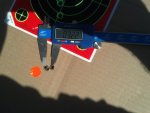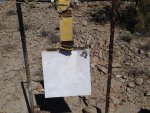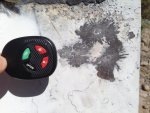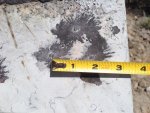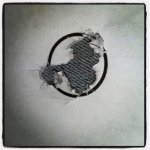Hand Loading for Long Range Ch 4: Powderin’ the thing.
Here we are again. We’re all fired up about hand loading like the big dogs. We got our brass about as perfect as we can & primed, our bullets are in perfect little sorted piles and their noses are clean. We got a great overall length to start with. Now for the last big part- fueling that baby.
But before we get going here let me reiterate a SERIOUSLY IMPORTANT safety note. One of the things we are going to do as upper level hand loaders is to use the book as a guide- but we’re going to decide what the max load is for our own dang self! HA! (insert Tarzan yell)
<span style="color: #FF0000"><span style="text-decoration: underline"><span style="font-weight: bold">And in doing so it is imperative you understand this.</span> </span></span> <span style="font-weight: bold">In the last chapter we learned how to come up with a great starting point in overall length. We found where the bullet was just kissing the riflings, and we extended that position + .010”. So in experimenting with powders and ALL the below instructions we are going to do so WITH EVERY ROUND .010” JAMMED into the riflings. IF YOU DO NOT FULLY UNDERSTAND WHAT IS BEING SAID HERE & WHY- DO NOT LOAD (near) BOOK MAX, MUCH LESS OVER!!! If the load starts with the bullet jammed into the rifling with all other things being even you WILL GET significant more pressure levels. So it’s okay to find ACTUAL max (possibly beyond book max) WITH THE BULLET JAMMED. Because when we later experiment with final overall length, we may end up with the bullet seated out of the riflings, or the bullet jumping from the case into the riflings. “Jump” does not give a pressure spike like being jammed. So we can go from JAMMED (A pressure spike situation) TO JUMP because our chamber pressure will DROP.
</span>
<span style="text-decoration: underline">But if a person were to experiment with max ++ loads with the bullet NOT engaging the riflings, they would ERRONEOUSLY think they found this particular rifles safe max load. And then if they decided to jam it in search for a better shooting load, with thet the associated pressure spike from being JAMMED- and that MAX or MAX PLUS load- he’ll likely lose his eyeballs, some fingers, his hearing a good portion of his face and potentially his life. Got it?
</span>
<span style="color: #FF0000"><span style="text-decoration: underline"><span style="font-weight: bold">START JAMMED- Work *towards* JUMP! DO NOT GO THE OTHER WAY</span></span></span> with near max, max or max plus loads!
Got it!? No? do not proceed! So onto the fun stuff.
I’m gonna walk you through perfoming a ladder test. The ladder test is in my & many precision shooters opinion –the- only way to work up a long range load. It typically saves times, componants and barrel life. How’s that? Because we are only going to shoot -1- round at a given powder charge! Each single round is a rung of the ladder. Sounds like a farce? Keep reading, you’ll get it. There’s only one hang up for the ladder test- it really need to be done at least a decent distance. If you have a place to shoot at least 300(+)yards do a ladder test. 300 minimum, 600 is great, 1000yd ultimate, but it's easy for the wind to blow your hits off paper which knocks the test in the head.
The first thing we need to do is decide on a -or preferably several powders to experiment with. This is done by talking to successful shooters familiar with your cartridge, reloading manuals, Sierra bulletsmiths (800-223-8799) etc.
So how do you do a ladder test? Glad you asked. Let's take say Reloader 15 powder for a hypothetical .308 load. My Sierra manual states 35.8 is a start load and 41.3 is max. I like round numbers. So we’re gonna call it 36g. START, 41g. MAX. Great.
Each single shot load experiment is going to be in 1% increments starting at minimum load and getting 1% hotter with each next round. So what is 1% of our max in this example? Let’s do the math.
41.0 x .01 = .41 So we are in this first coarse test jump .41 grains between each load. Again this first ladder is a coarse (but HIGHLY INFORMATIVE) test. So to save time let's bump it up to full half grain intervals, .5g.
Now make a list of the loads you would load to have a single round from start, to max plus in .5 grain jumps. Write them down.
1\ 36g
2\ 36.5g
3\ 37g
4\ 37.5g
5\ 38g
6\ 38.5g
7\ 39g
8\ 39.5g
9\ 40
10\ 40.5
11\ 41g. BOOK MAXIMUM
12\ 41.5 !MAX plus!
13\ 42g !MAX PLUS!
14\ 42.5 !Max Plus!
<span style="text-decoration: underline">*** write the load number, powder type, and grains on each case of loaded ammo with a sharpie marker. <span style="color: #FF0000">For max and max plus loads i color the neck of the case RED.Don’t skip this.</span></span>
So now you have a mere LESS THAN 14 rounds to shoot and you will obtain VOLUMES of info. <span style="font-weight: bold">MORE SAFTEY ADVICE:
For shots #10 and on proceed with caution, looking and documenting well any signs of excessive pressure. STOP shooting when you detect the least sign of pressure: cratered primer, shiny marks on case head, Extractor/ejector marks, sticky bolt lift etc.</span> WRITE DOWN the actual max load for this powder, this bullet,for this particular rifle in your loading manual and several other places.
Having max and max plus loads will let you know what the actual MAX load is for your particular rifle. My 300 win mag 1000yard rifle does not show pressure with some powders until I'm -three full grains- over book max. <span style="font-weight: bold"><span style="color: #FF0000">ANY loads deemed too hot to be safe to shoot should be pulled apart/unloaded right there at the range for safety</span>.</span>
So now pack up and head to the range. At the range we are going to need a large piece of paper. I keep a roll of brown paper painters paper on hand for all my range shooting. It’sa bout 36”wide and many feet (120'+ ?) come on a roll. Last time I bought some it was $9 @ my local Lowe’s / Home Depot)
We are going to shoot the start load first, and the MAX PLUS load last, all at the SAME AIMING POINT on the paper. So we are going to get a TALL vertical string. So no skimping on paper. From a good solid shooting position shoot each load at THE SAME AIMING POINT. And for once in your life in long range shooting you can ignore cross winds.
Now the creative part you going to mark each bullet hole by it's shot number- referenced by it's powder charge after it's shot because you will have overlapping holes. Shoot one mark one.
There are several ways of doing this whether it be shoot one and walk down and mark it, to really strong spotting scopes (always seems to screw up my ladder tests and I have to start over) DIY target cams, or coloring coding shots by coloring the bullet with a red, green & blue markers accordingly and shooting at white paper. The marker will transfer to the target paper. I'd still not shoot more than 3 before walking. Me?? No- I'd certainly not want it to ever be said I have a faithful & trusted shooting companion down range with a marker standing off to the side of the target board a safe distance and we "shoot one, mark one" as a expedient team.
So what's happening on paper? You will get a vertical string of hits. (don't worry if they shift left and right with the wind, that is irrelevant right now, trust me.) First thought is that it's increasing velocity that makes the hits climb up the target, and that is true to a point. What is also happening for the most part is the bullets are leaving the barrel in a different state of barrel flex, or vibration.
You need to understand this. When you fire your rifle, your barrel flexes in a sine wave pattern. What your getting in the ladder test is the bullet is exiting the muzzle shot to shot, with the barrel flexed more and more up.
BUT, ahah! We got some groups anyway! You will get a few shots that cluster, or actually make a decent group on your target, despite their each one having a(get this) differing powder charge!
ENTER THE "NODE." The node is the very top of the wave and very bottom. For ultimate accuracy, you want your bullet exiting the muzzle precisely when it has flexed all the way up, STOPPED [for a nano second] before it begins it journey flexing back down. This is why you had a decent group or two during the ladder test, despite differing powder charges.
So now your looking at the ladder test target. You got shots all over the place vertically, but some formed nice clusters, or groups.
Note each powder charge that grouped. Let's say for this test, bullet holes 2,3,4 formed a group, and 7,8,9 formed a group.
So this is awesome. In a mere 11 or so shots, we learned at what powder charges the bullets actually leaves the barrel when the muzzle is not moving(vibrating) around wildly.
So now we go home sip a beverage and study and DOCUMENT our findings.
We see 36.5, 37 & 37.5grains shoot in the node of the barrel.
We now take these and do a refined but smaller ladder test. (We do this for the other clustered shots too! Don't neglect to further ladder test any loads that formed a cluster/group.)
So now we are going to load rounds for another ladder test.
Let's jump in finer, .3grn increments now, we are refining things now. Let's go a little outside* this accuracy window (our shots that grouped), powder charge-wise though just for good measure;
1\36.3*
2\36.6
3\36.9
4\37.2
5\37.5
6\37.8*grains
So now we have a good lot of charges with overlap a little each way from the accuracy cluster of the first ladder test. We only loaded one of each charge again. Now go repeat the ladder test/target, and again in a mere 6 shots you will have volumes MORE information. [Don't forget to do this second ladder test for every accuracy cluster/group that showed up on the first test]For each ladder, it is optimal to back up -at least- another hundred yards from the last distance.
You will get another accuracy cluster, all the more dead-on the barrel's node. Let's say shots 2,3,6 again formed a group.
Now you go back and load 5 SHOT GROUPS for each of these:
5@ 36.6 grains
5@ 36.9 grns
5@ 37.2 g.
One of these will prove overall best. Now you got your powder charge! And it is the LEAST sensitive to shot to shot velocity variations due to being at the node.
Now go back with this same powder charge in every round but play with bullet seating depth.. Your at .010” jammed right now. Try a 5 shot group @ - .010 JUMP (not touching the riflings.) Keep trying groups as you move your OAL .010”. You’ll see the rifle perk up and shoot one of these lengths best. Now you got your load.
If you want to try to shave the last couple of thousandth’s off your groups average, play around again the powder charge- load a 5 shot group just slightly under –THE- load and just slightly over and see if things get even better still yet. It may or may not.
Then if you want to be super anal, and can get out to at least 600yds go run primer brand testing too! You might get even more uniform muzzle velocity
This is how 1000 yard bench rest loads are worked up & records broken. You may not choose to refine it to the n'th degree, but running at least 2, ever finer ladder tests as described here will get any rifle shooting nealry as good as it practically can.
I just ran ladder test 1(course) and test 2 (refined) with my .300 win mag (FACTORY savage tac) I'm to where I need to move to 5 shot groups. But, for my 3rd and most fine/narrow ladder test I moved back to 500 yards. I fired two identical rounds to warm my bore and verify my point of impact on the 500 yard target, using a load from the middle ladder test that was already showing a good powder charge. My buddy who was not down range, not helping me from no where near the target board called back on the radio and said "Damn, don't change a thing, sighter shots 1 & 2 are within 3/4" of each other!!
Okay fine! I’ll throw in a picture…
This picture below was the last ladder test I did with my .300 Win Mag Savage Tactical rifle. Each shot was .5 grains hotter (H4831SC powder) than the last.
It's really easy to see exactly where the node is on this target. Shot 1-9 are in the photo but #'s 10 & 11 strung on up the target out the top, not in photo.
Remember that no two of these bullets holes where fired with the same powder charge, but shooting in the node is where it's at- the "four shot group" shown here, #'s 6,7,8 & 9 formed a 3.130" group or .63 moa group @ 525 yards from a factory Savage, with all differing loads. (And obviously in the picture- this was all from wind. I was disregarding and shooting right through wind gusts. There's only .949" of vertical dispersion here or .19 MOA @ 525 laser'd yards.)
Going back and trying my 5 (identically loaded) shot groups should theoretically at least shrink this by half, most likely quitea bit more and identify my rifle's ultimate load with a 210 VLD bullet, and H4831SC powder. From what I have seen thus far with this rifle I'm looking for at least SUB(!) .35 moa 5 shot groups in the end. I'd sure take .2_ moa numbers.
[Note since originally writing this piece- using the processes in this series I have written, I have ended up with two loads (H4831SC & H1000) that are .25moa shooters @ 400 yds.]
Gentlemen and ladies, this is THE way to work up a load, and it won't even take a full box of bullets to do so.
In the next chapter we’ll talk about inspecting loaded ammo. Hope you enjoyed this instructional.
-----------------------------------------------------------------------
This instructional took considerable time & effort. It is presented here for free. Enjoy! However if any one feels motivated to express appreciation a donation can be sent to the paypal account
[email protected]. No big deal. Thanks! TresMon

